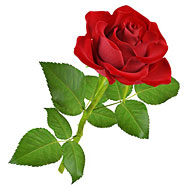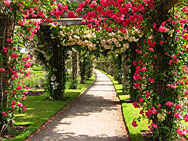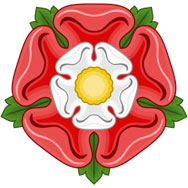Roses with Buds
(formerly known as the Roses with Doves - read below to find out why this item was renamed)
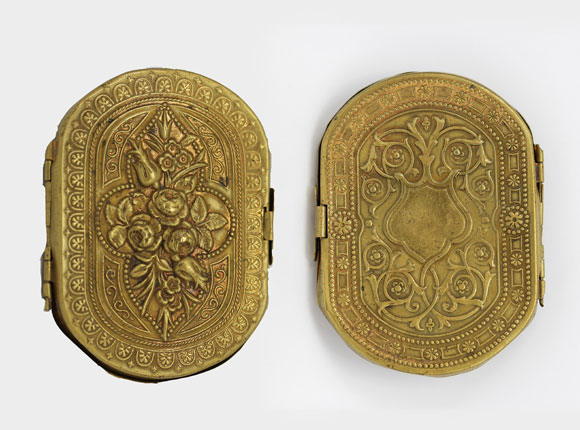
Needle Case front and back (photographs courtesy of Lynda Herrod)
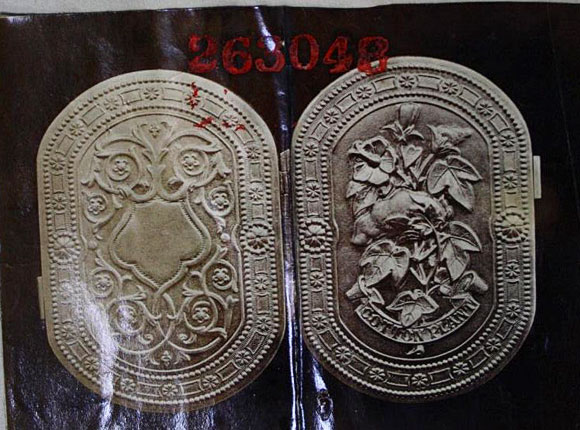
Design Representation
Although the actual needle case is stamped June 27, 1872, no registration for a needle case like this one was found on that date. Since this needle case has the identical back cover to the one in this design, it is assumed that this is a variation of this design
Design Details
Needle Case Type: |
Accordion |
Patent/Registered to: |
James Smith & Son - Astwood Bank |
Patent/Design Representation #: |
Ornamental Class 1: Metal: #263048 |
Patent/Design Registration Date: |
May 31, 1872 |
Location of Patent/Design Registration: |
The National Archives (TNA) - Kew, UK |
Reference #: |
TNA Representation - BT 43/32/263048 |
Dimensions: |
5 x 6.8 |
Material: |
Brass |
Name Variations: |
Unmarked |
Other Variations: |
a) Cotton Plant |
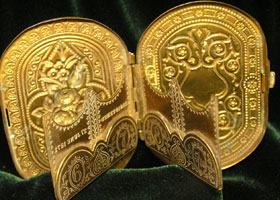
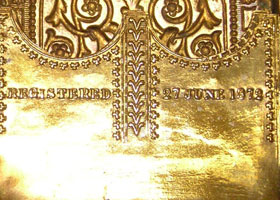
Interior panels and date detail (photographs from eBay)
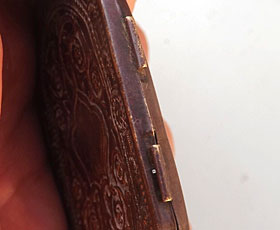
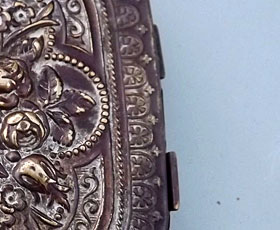
Version with snap catch (photographs from eBay)
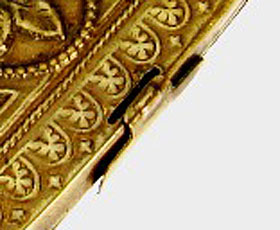
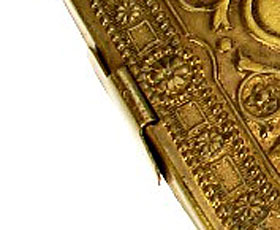
Version with clasp catch (photographs courtesy of Bunny's Place)
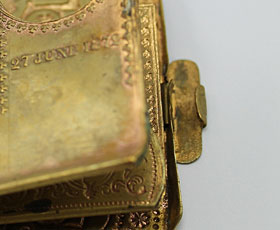
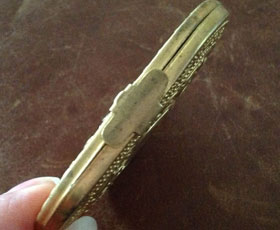
Version with clasp catch (left photograph courtesy of Lynda Herrod, right photograph courtesy of Hannah O'Byrne)
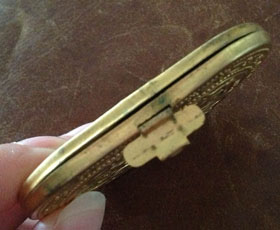
Version with clasp catch (photograph courtesy of Hannah O'Byrne)
Clasp Style
This item is interesting because it was produced with two different style clasps. At least two versions with the snap clasp have been found and at least three versions with the clasp catch have been found. One can only wonder why it was produced with two different clasps.
Why This Item Was Renamed
The name by which an Avery needle case is known shouldn’t be changed unless there is compelling evidence to justify a change. With most needle cases the original names were assigned by Ruth Mann and Estelle Horowitz in their book “Victorian Brass Needlecases” published in 1990. To date the only name changes made on this website have been based on direct evidence, such as documents or articles created around the time the needle cases was manufactured. However, the name change on this page is based on a detailed examination of the piece, peer review with other collectors and additional research involving Victorian depictions of roses, rose buds and doves.
While this website was being developed Lynda Herrod suggested the name of this item be changed. She had one of these needle cases in her collection and after careful review, felt the design on the front cover portrayed roses with buds rather than the roses with doves assigned by Mann and Horowitz. Lynda forwarded detailed photographs to Terry who concurred with her assessment so the name was changed on this webpage.
Several months later Terry purchased the Roses with Buds needle case on eBay and took it to her local collectors club meeting for show and tell. When she presented it to the group she informed them of the name change and asked for their opinion. Did they think the design included two doves or two buds? Brooks immediately examined the front cover with her magnifying glass and decided the figures in question were not doves but were swallows. In addition, she felt each swallow was depicted as if one was looking down on it from above. She passed the needle case to Kris who agreed with Terry that they were rose buds. Then Sharon and Nancy examined it and they were both leaning toward the birds but weren’t totally convinced. Brooks suggested everyone view the figures from the inside to see if that would help. Although Brooks still felt they were swallows, now Terry, Kris, Sharon and Nancy all thought they definitely looked more like rose buds. Brooks was bothered by the circular decoration at the end of each figure which she felt looked like the head of a bird rather than the stem of a rose bud. However, Kris didn’t think a swallow and a rose made sense, why would those two items be placed together. The end result was the group suggested more research was needed, especially finding examples of roses and buds, roses and doves, and roses and swallows to see how they were represented during the Victorian period.
Additional research was undertaken online including Googling images for various combinations of roses and birds. As a result the following discoveries were made (see the photos below):
- Real rose buds do have a circular area on the bud where they meet the stem.
- Swallows rarely appear in Victorian drawings and none could be found in combination with roses.
- Roses with doves were common on Victorian cards, especially Valentines, however the doves were significantly larger than the roses and were always positioned from the side view, never from the top.
- Roses with buds were a very popular theme on Victorian cards, and they looked similar to the ones depicted on this needle case.
What does this additional research tell us? It seems most likely that the figures on this needle case are in fact stylized rose buds not doves. Peer review and collaboration is extremely important in historical research because each person brings a different perspective to the table and therefore additional areas are explored leading to a more accurate conclusion. Please contact us if you have anything to add regarding this item.
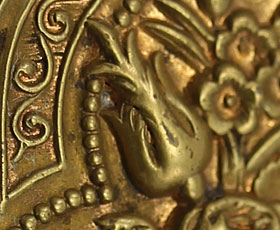
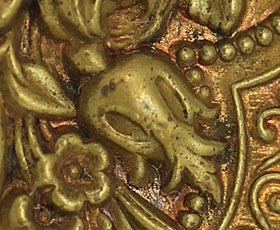
Needle case rose bud details (photographs courtesy of Lynda Herrod)
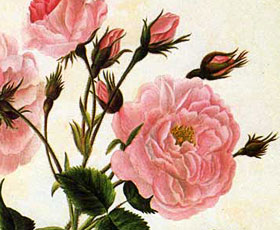
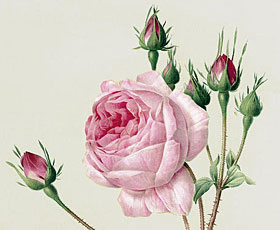
Roses with buds in Victorian drawings (from the Internet)
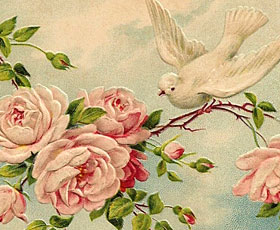
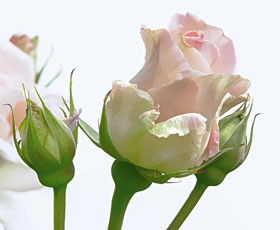
Victorian card with roses and dove and a real rose with bulbous stem base (from the Internet)





